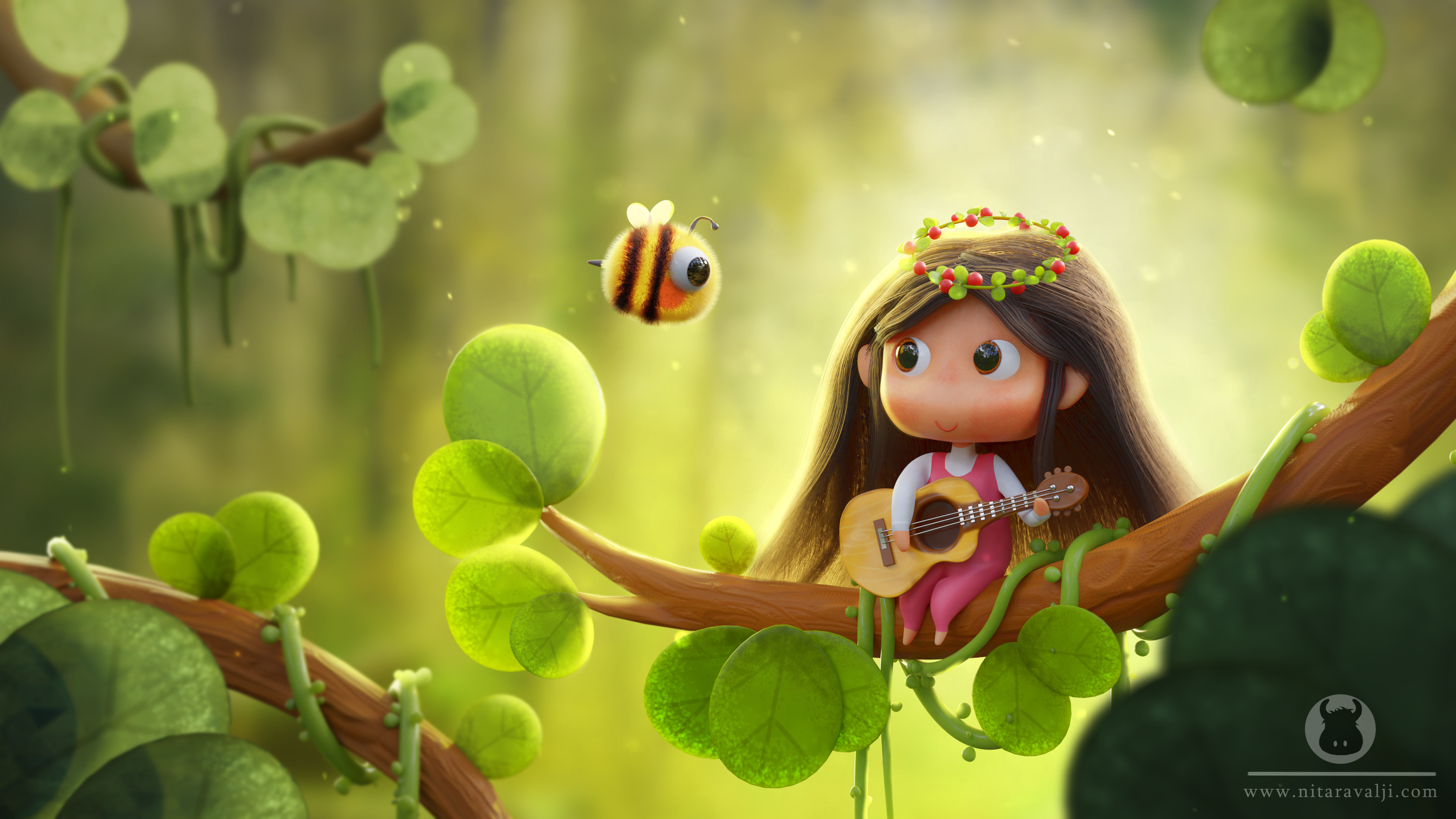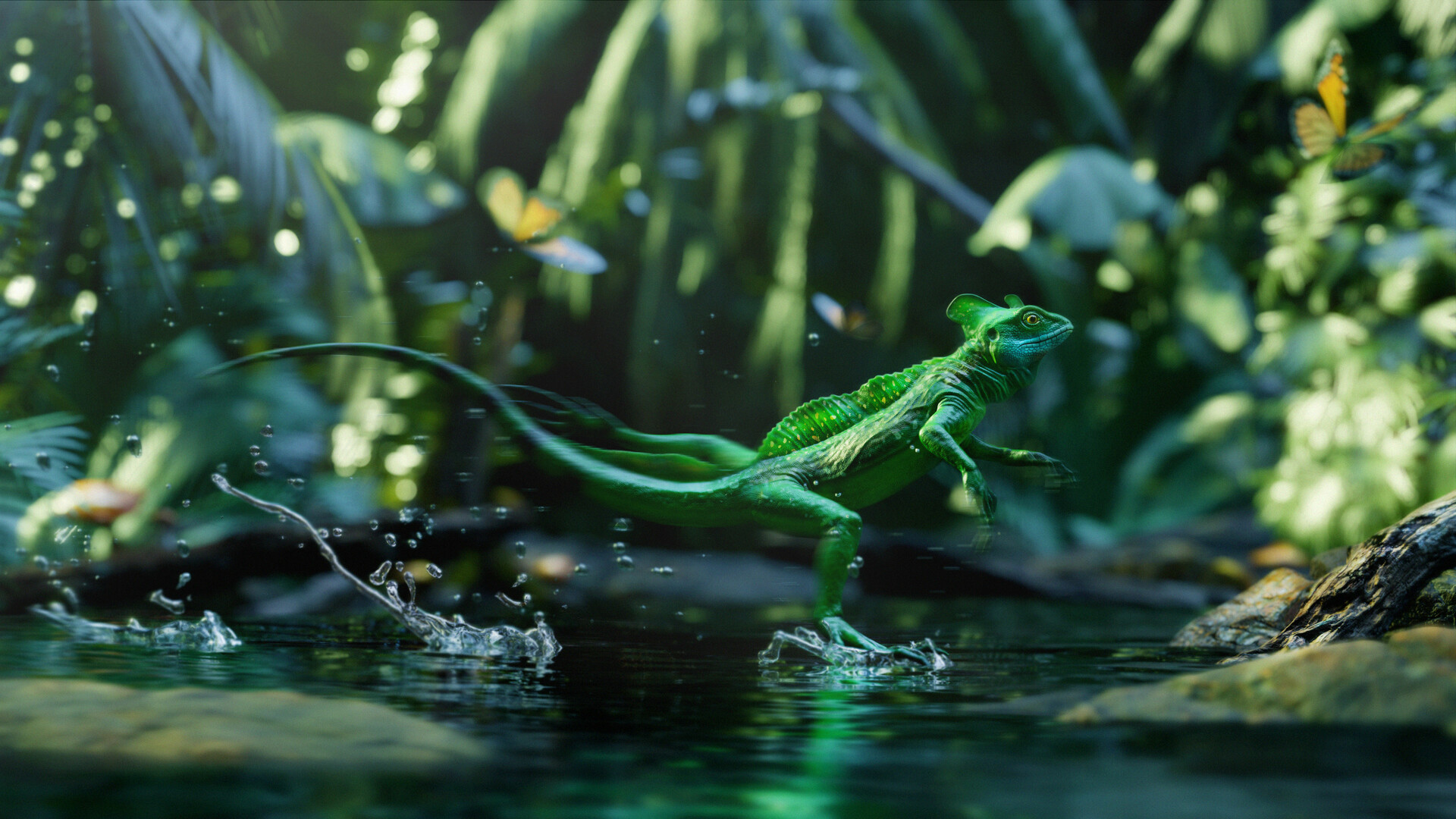Week highlights: LGM 2019 schedule available, new releases of G’MIC, Milton, and Godot, a technical preview of Krita 4.2.0 with HDR displays support on Windows 10, lots of exciting changes happening in the video department.
LGM 2019 schedule
The schedule of Libre Graphics Meeting 2019, the conference for creative professionals using free/libre software, is now available. Currently, it’s a PDF file; an online (HTML) version is likely to appear soon. Please bear in mind that organizers of the event keep updating it, so you might have to use an updated link from the homepage.
This year, the event is taking place in Saarbrucken, Germany, from May 29 to June 2. This is essentially your two months notice :)
Graphics
GMIC 2.5.0 is out with many fixes and small improvements, but one interesting new feature is the Artistic / Stylize filter. This filter implements an exemplar-based style transfer algorithm, to stylize images from user-defined styles. For a detailed list of changes, see the release notes.
The GIMP team is finalizing the release of 2.10.10 with quite a few new features, some of which landed just a few days ago.
(1/2) Small side project, just for fun: we improved a bit support of indexed color images in @GIMP_Official. Editing various color widgets in particular shows a dialog to edit the colormap rather than a RGB chooser (as random colors out of the palette cannot be drawn). pic.twitter.com/YinqZN4110
— @ZeMarmot@fosstodon.org (@zemarmot) March 18, 2019
Thanks to Morevna Project developers, Krita now supports exporting animation to a sequence of PNG files via command line (the new “–export-sequence” option). Morevna team already updated their RenderChan footage rebuilding tool to support that.
User _happygnu contributed a patch that adds the ability to use patterns with Krita’s shape brush (a choice between the foreground color and global pattern is now available).
The team also released a preview of Krita 4.2.0 with HDR displays support. The also published an article explaining the basics of the technology and why it’s only available on Windows 10 for now.
Sergio Gonzalez released Milton 1.6.0, a new version of the free/libre (GPLv3+) hardware-accelerated painting program with resolution-independent canvas. This version comes with a line drawing mode, better GL compatibility, performance improvements, and Huion tablets support.
Milton is officially available for Windows only at the moment but is known to build on Linux.
It appears that dothiko started working on image references in MyPaint in his/her branch. For now, it’s just API to load an external image file without modifying it. The user interface will supposedly come later.
3D
Quite a bunch of updates landed to Grease Pencil in Blender 2.80 last week thanks to Antonio Vasquez. With the Name option enabled (Viewport Display panel), when you select a stroke in the Edit mode, the name of the material is displayed near the first selected point.
It’s now also possible to lock the drawing plane to the 3D cursor and use the 3D cursor orientation. As Antonio puts it, this allows more flexibility when you are drawing and reduces the need to create geometry to draw over surfaces.
Stefan Werner from Tangent Animation improved the thread order for better rendering performance of Cycles. For now, it’s only enabled for CUDA, because, as Stefan notes, results on OpenCL/AMD were too much of a hit-and-miss. For CUDA, however, 3 out of 4 benchmark tests yielded a noticeable improvement in double digits (while 1 was a slight increase in rendering time).
Game Programming/Design
After a year of work, Godot 3.1 game engine is finally out in the wild. The release notes are GIMP-long, but well worth the reading. Some of the highlights of the release are:
- OpenGL ES 2.0 renderer
- Revamped inspector, 2D editor, animation editor, AnimationTree
- New TileSet editor
- KinematicBody2D (and 3D) improvements
- 3D soft body support, improved 3D editor
- Visual shader editor
- CPU-based particle system
You can also watch the release trailer by Nathan Lovato et al.
Video
Olive got through a bit of effects code refactoring, where UI code was separated from the backend, and the editing of effects for multiple clips was added.
There’s more work going on in the OpenColorIO direction, and the plan is also to switch to 16-bit float for internal color representation (away from 8-bit RGBA). This work is guided by much-feared Troy Sobotka.
Additionally, you can now switch from Olive’s default UI theme to the one you selected for all your Qt applications. The relevant switch is in the new Appearance tab of the Preferences dialog. Judging by user feedback, the lack of such an option used to annoy some people.
Flowblade got an option to loop clips in the monitor, but, more interestingly, the application is now getting a rotomask.
The Kdenlive team finally merged the ’timeline_refactoring’ git branch into the master branch in preparation for the upcoming 19.04 release. Meanwhile, Akhil K Gangadharan added audio capturing using QMultimedia, Nicolas Carion started refactoring the selection mechanism, and Vincent Pinon slightly improved the UI by increasing the timeline contrast.
The GDquest team started beta-testing the update of Power Sequencer for Blender 2.80.
Music-making
Rui Nuno Capela released updates to QjackCtl, Qsynth, Qsampler, QXGEdit, and QmidiNet. The most important change is better HiDPI support, which requires at least Qt 5.6. And it looks like Qtractor 0.9.6 is about to happen too.
Jan de Jongh released the first version of JMidiDevice, a Java library that basically works as a patch editor for various sound FX units and MIDI-capable devices. Currently, it comes with support for Boss ME-80 guitar processor. Work on the Alesis Quadraverb (GT) and some AKAI MIDI controllers support is reportedly underway.
Tutorials
David Revoy posted a Krita timelapse of painting “Flight of Spring”.
The Freak Lesson published a GIMP tutorial on designing a simple website.
Another new GDquest tutorial covers the filmic module in darktable 2.6.
CG Geek published an introduction to 2D animation with Blender 2.80.
Finally, a new video course (requires a paid subscription at CG Cookie) by Kent Trammell is dedicated to creating procedural sand dunes with Blender 2.80.
Art and showcases
The Battle for Wesnoth team is teasing the community with a screenshot of an early port to the Godot game engine.
Are we working on a thing? We might be working on a thing. #gamedev #GodotEngine pic.twitter.com/eSLo0PyGMG
— Battle for Wesnoth (@Wesnoth) March 17, 2019
Nita published a new Cycles render (Blender 2.80), ‘Singing in the tree’, based on a 2D illustration by Xiaoguii Zhang.

Aleksandar Misic posted an Eevee render of a Basilisk lizard.

Each of my weekly recaps involves researching, building and testing software, reporting bugs, talking to developers, actually watching videos that I recommend, and only then writing. Time-wise, that’s usually between 10 and 15 hours. If you enjoy the work I do, you can support me on Patreon or make a one-time donation.
